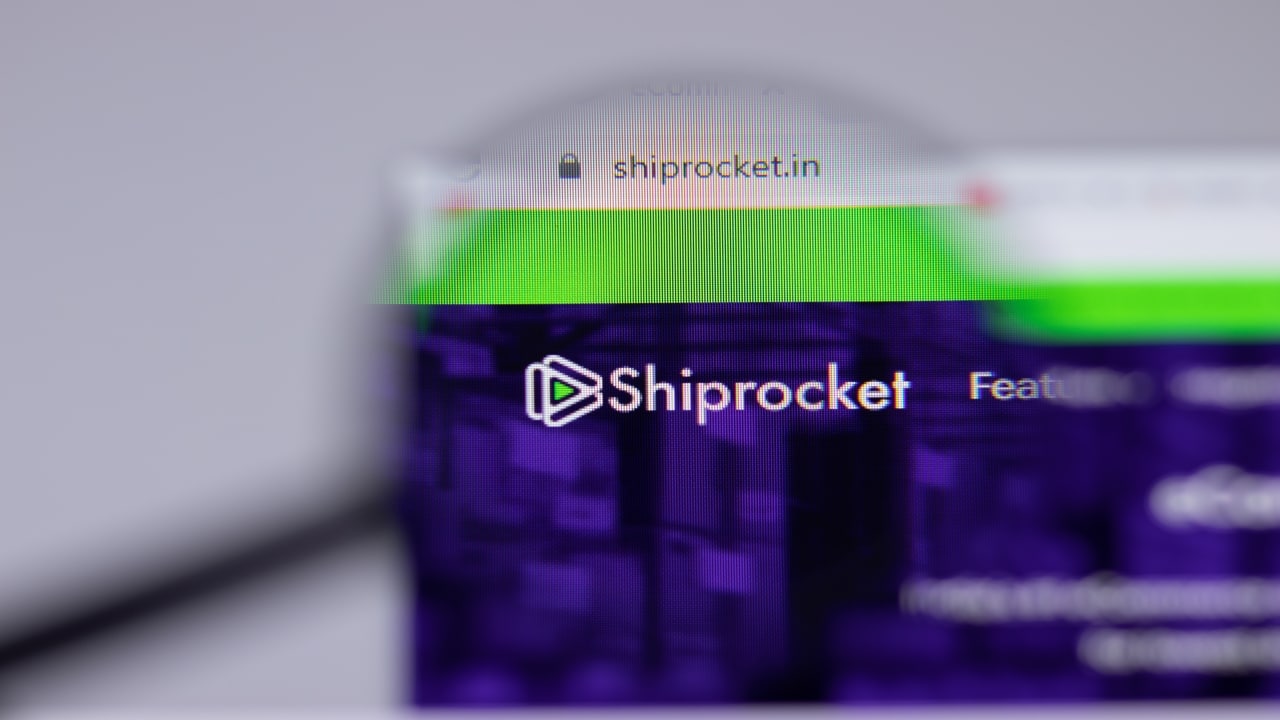Advertisement|Remove ads.
Shiprocket CEO Saahil Goel says IPO is a new beginning, not an exit event for the company
Goel said Shiprocket’s market debut is aimed at strengthening the company’s long-term foundation rather than chasing near-term valuations. With the core business generating steady cash flows and emerging verticals scaling rapidly, he believes the company is positioned to power millions of Indian businesses as e-commerce evolves into new formats.

It has been a frenzy of listings on Dalal Street, with several new-age consumer and technology companies queuing up to tap the market. Shiprocket is the latest to join that list after securing SEBI approval for its over ₹2,300-crore IPO. But for Founder and CEO Saahil Goel, the market debut is less about liquidity and more about taking the company into its next phase of growth.
Speaking to CNBC-TV18, Goel said the decision to go public is driven by the company’s long-term vision. Over the last 13 years, Shiprocket has built what he calls “rails for e-commerce” — an invisible but essential layer on which marketing, payments, logistics and returns operate. “The future of commerce will be hyperlocal, personalised, vernacular and even agentic with AI,” he said, adding that India’s fast-changing landscape requires a modular business that can adapt to multiple forms of digital trade.
Goel described Shiprocket’s architecture as a “box of Lego blocks”, allowing merchants to plug in capabilities such as marketing, payments, lending or logistics as needed. This approach, he said, positions the company to remain relevant no matter how India’s e-commerce market evolves over the next decade.
With that outlook, Goel said the company began contemplating an IPO two to three years ago, driven by the need to institutionalise its long-term vision and build what he hopes will eventually be a “100-year company”. Asked about timelines, he indicated the listing could take place soon. “I think we’re pretty close, so you should see us in the next year… early next year,” he said.
On valuation, Goel was categorical that the IPO is not being timed around a specific number. The company was last valued at around $1.2 billion in the private market. “This is a new start in a way… the company is growing up; it’s a teenager now,” he said. “Valuation isn’t something we are aspiring for. We are aspiring for impact.”
That impact, Goel said, includes scaling Shiprocket’s merchant base from the current 200,000 to 1 million profitable businesses in the next five years, and eventually powering 10 million businesses in India. “Whatever it takes — going public, bringing the right partners, raising capital, doing M&A — it’s all a means to an end,” he said.
On the financial front, Shiprocket has narrowed losses to about ₹74 crore in FY25, though Goel stressed that profitability is not a binary goal but part of a broader capital allocation strategy. The company’s core shipping business has had double-digit EBITDA since 2019–20, generating cash that is reinvested into newer growth engines. “If we can keep doing this, we have unlimited growth life, unlimited profitability and an unlimited runway as a company,” he said.
Emerging businesses — including omni-channel logistics, the marketing stack and cross-border services — already contribute 20–25% of revenue, and Goel expects this share to rise meaningfully over the next few years.
Looking ahead, Goel’s ambition is for Shiprocket to eventually power 10% of India’s e-commerce market. With the sector projected to grow from around $70–80 billion today to $700 billion–$1 trillion over the next decade, the scale of the opportunity is substantial. He said the company is already seeing new forms of commerce emerge — from merchants selling through influencer-led videos to order fulfilment happening entirely via messaging apps.
“We can’t imagine what e-commerce will look like in 5–10 years,” Goel said. “But if the market is going to 10x, the landscape is not going to look the same as today.” As India climbs to higher levels of income and digital adoption, he expects Shiprocket to operate largely in the background, powering a significant share of the ecosystem. “We will be very, very present — maybe invisible many times — but definitely present in many aspects of this market,” he said.
Watch accompanying video for entire conversation.
Speaking to CNBC-TV18, Goel said the decision to go public is driven by the company’s long-term vision. Over the last 13 years, Shiprocket has built what he calls “rails for e-commerce” — an invisible but essential layer on which marketing, payments, logistics and returns operate. “The future of commerce will be hyperlocal, personalised, vernacular and even agentic with AI,” he said, adding that India’s fast-changing landscape requires a modular business that can adapt to multiple forms of digital trade.
Goel described Shiprocket’s architecture as a “box of Lego blocks”, allowing merchants to plug in capabilities such as marketing, payments, lending or logistics as needed. This approach, he said, positions the company to remain relevant no matter how India’s e-commerce market evolves over the next decade.
With that outlook, Goel said the company began contemplating an IPO two to three years ago, driven by the need to institutionalise its long-term vision and build what he hopes will eventually be a “100-year company”. Asked about timelines, he indicated the listing could take place soon. “I think we’re pretty close, so you should see us in the next year… early next year,” he said.
On valuation, Goel was categorical that the IPO is not being timed around a specific number. The company was last valued at around $1.2 billion in the private market. “This is a new start in a way… the company is growing up; it’s a teenager now,” he said. “Valuation isn’t something we are aspiring for. We are aspiring for impact.”
That impact, Goel said, includes scaling Shiprocket’s merchant base from the current 200,000 to 1 million profitable businesses in the next five years, and eventually powering 10 million businesses in India. “Whatever it takes — going public, bringing the right partners, raising capital, doing M&A — it’s all a means to an end,” he said.
On the financial front, Shiprocket has narrowed losses to about ₹74 crore in FY25, though Goel stressed that profitability is not a binary goal but part of a broader capital allocation strategy. The company’s core shipping business has had double-digit EBITDA since 2019–20, generating cash that is reinvested into newer growth engines. “If we can keep doing this, we have unlimited growth life, unlimited profitability and an unlimited runway as a company,” he said.
Emerging businesses — including omni-channel logistics, the marketing stack and cross-border services — already contribute 20–25% of revenue, and Goel expects this share to rise meaningfully over the next few years.
Looking ahead, Goel’s ambition is for Shiprocket to eventually power 10% of India’s e-commerce market. With the sector projected to grow from around $70–80 billion today to $700 billion–$1 trillion over the next decade, the scale of the opportunity is substantial. He said the company is already seeing new forms of commerce emerge — from merchants selling through influencer-led videos to order fulfilment happening entirely via messaging apps.
“We can’t imagine what e-commerce will look like in 5–10 years,” Goel said. “But if the market is going to 10x, the landscape is not going to look the same as today.” As India climbs to higher levels of income and digital adoption, he expects Shiprocket to operate largely in the background, powering a significant share of the ecosystem. “We will be very, very present — maybe invisible many times — but definitely present in many aspects of this market,” he said.
Watch accompanying video for entire conversation.
Read about our editorial guidelines and ethics policy










/filters:format(webp)https://news.stocktwits-cdn.com/large_Copper_resized_jpg_1c79882889.webp)
/filters:format(webp)https://news.stocktwits-cdn.com/vivekkrishnanphotography_58_jpg_0e45f66a62.webp)
/filters:format(webp)https://news.stocktwits-cdn.com/Getty_Images_2245018119_jpg_59c2c5db88.webp)
/filters:format(webp)https://news.stocktwits-cdn.com/shivani_photo_jpg_dd6e01afa4.webp)
/filters:format(webp)https://st-everywhere-cms-prod.s3.us-east-1.amazonaws.com/large_Archer_Aviation_resized_db3acc3d4e.jpg)
/filters:format(webp)https://st-everywhere-cms-prod.s3.us-east-1.amazonaws.com/unnamed_jpg_9dff551b50.webp)
/filters:format(webp)https://st-everywhere-cms-prod.s3.us-east-1.amazonaws.com/large_eli_lilly_hq_resized_af4cc05fd5.jpg)
/filters:format(webp)https://st-everywhere-cms-prod.s3.us-east-1.amazonaws.com/large_magnificent_7_logos_resized_cd405caf8a.jpg)
/filters:format(webp)https://st-everywhere-cms-prod.s3.us-east-1.amazonaws.com/Rounak_Author_Image_7607005b05.png)
/filters:format(webp)https://news.stocktwits-cdn.com/large_Getty_Images_2201944156_jpg_8a64beb7f0.webp)